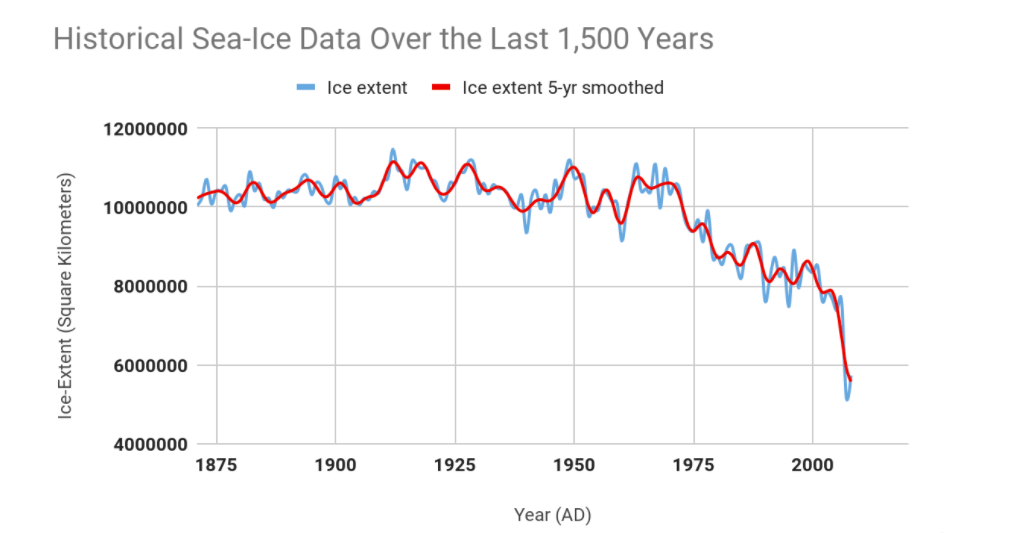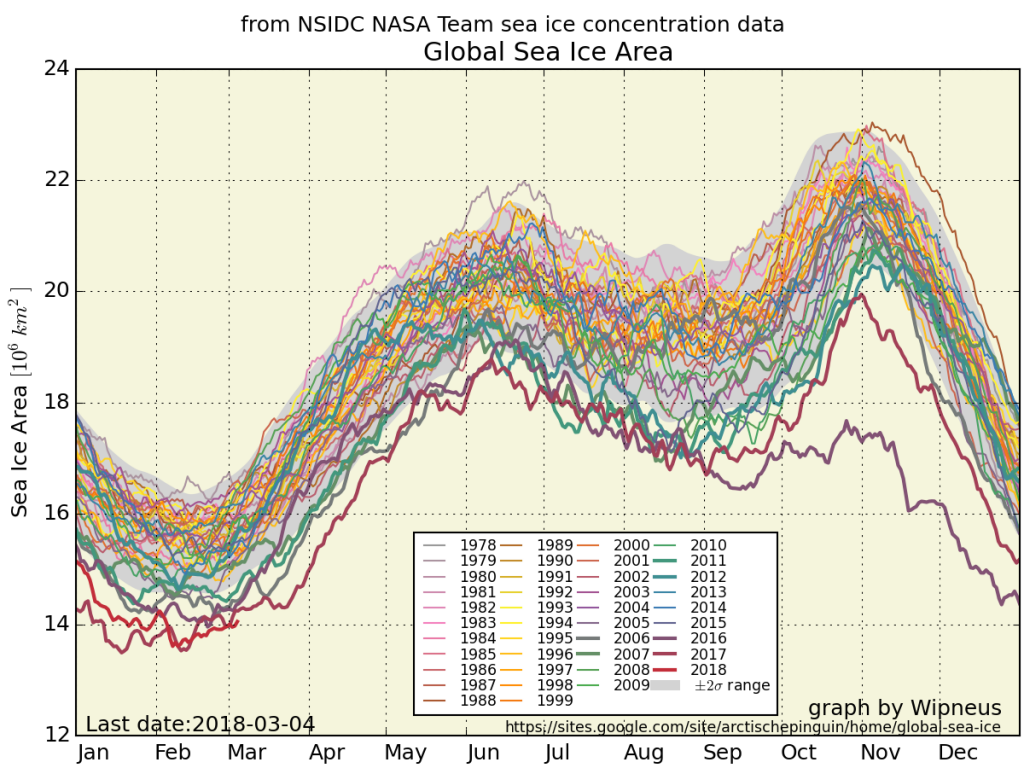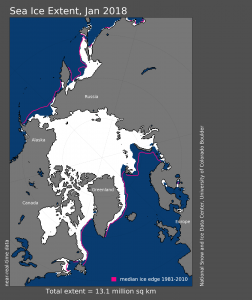The Arctic Ocean has been observed to reliably freeze every winter, however the rise in Arctic temperature just now caught up with the rate of ice forming in this region. This results in the most unprecedented transformation of the Arctic environment since the dawn of human civilization: It no longer freezes.
The latest Arctic Report, published by the National Oceanic and Atmospheric Administration (NOAA), shows that in recent years a warming trend persisted, showing “no sign of returning to reliably frozen region of recent past decades”. Scientists determined that the warming will continue to increase at double the rate of global temperature increase.
2017 saw a historical low for maximum sea ice extent. The Arctic experienced “the largest magnitude decline in sea ice, and the greatest sustained rate in sea ice decline in that 1,500-year record,” said Emily Osborne, a NOAA scientist, citing a study by Kinnard et al. This means that in recent years less and less of the Arctic ocean freezes during peak winter. This is shown in Figure 1.

Figure 1. Reconstruction of approximately 5-year mean sea ice extent (Kinnard et al., 2011) spanning the last 1,500 years
How does this look for 2018? Meteorologist Eric Holthaus said “the middle of February is the usual time of the annual low for the planet’s sea ice.” The National Snow & Ice Data Center (NSIDC) reported that current Arctic sea-ice extent is even lower than 2017 data, despite experiencing one of the coldest winters in recent years. This trend is shown in the graph below.
Area is calculated from NSIDC sea ice concentration data, measuring a grid cell covered in sea ice of 15% concentration or more. As of now, the planet is covered in just under 16 million square kilometers of sea-ice, 1.36 million square kilometers below the 1981–2010 average:
Jeremy Mathis, director of the Arctic Research Program for NOAA described his field research in the Arctic region:
“When I started going to the Arctic in 2003, it was a very different environment that it is today. Back in 2003, we were breaking ice everywhere we went, from pretty much starting in the Bering Strait moving all the way up into the study areas north of Alaska and into the central Arctic basin. There was ice that was very thick and it was very extensive. This year in 2017, during a 25-day cruise in the Arctic, we didn’t see a single piece of ice. We were sailing around on a coast guard icebreaker in blue water that could have been anywhere in the world. And it certainly didn’t look like the Arctic.”

CNN: Greenland, Summer 2017. Iceberg fragments floating off the coast.
The impact of this change will affect the entire world. As ice melts, less heat is reflected off from Earth’s surface. Sunlight entering the atmosphere will instead be absorbed by thinner darker ice, which accelerates the rate of ice melting even further.
Scientists are pessimistic for the future, observing no end for this trend in sight.
References
Beitler, J. (2018). Sea ice tracking low in both hemispheres | Arctic Sea Ice News and Analysis. [online] Nsidc.org. Available at: http://nsidc.org/arcticseaicenews/2018/02/sea-ice-tracking-low-in-both-hemispheres/ [Accessed 5 Mar. 2018].
CBC (2017). Arctic report card: Permafrost thawing, sea ice melting faster than before. [online] Available at: http://www.cbc.ca/news/canada/north/noaa-arctic-report-card-permafrost-thawing-1.4445222 [Accessed 5 Mar. 2018].
Kinnard, C., Zdanowicz, C., Fisher, D., Isaksson, E., de Vernal, A. and Thompson, L. (2011). Reconstructed changes in Arctic sea ice over the past 1,450 years. Nature, [online] 479(7374), pp.509-512. Available at: https://www.nature.com/articles/nature10581 [Accessed 5 Mar. 2018].
Smith-Spark, L. (2017). Warmer Arctic temperatures the ‘new normal’. [online] CNN. Available at: https://www.cnn.com/2017/12/13/world/arctic-report-climate-change-intl/index.html [Accessed 5 Mar. 2018].
J. Richter-Menge, J. E. Overland, J. T. Mathis, and E. Osborne, Eds., 2017: Arctic Report Card 2017, http://www.arctic.noaa.gov/Report-Card


